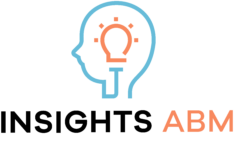6 Best Landing Page Form Tactics to Capture More Leads
Marketing usually sounds like something you have to go elsewhere to do. Traditionally, it might involve reaching out to customers on the phone, putting your logo on billboards, sharing information on TV or on the radio, creating social media ads, or sending out waves of emails.
But while “landing pages” may sound passive — after all, they’re called “landing pages,” not “seek and find pages” — they still need to be carefully crafted to become effective lead-generating machines.
When you create a landing page, it needs to have one goal and one call to action. Your landing page is NOT your home page, which has to be a general overview of your entire site or business.
Instead, a landing page exists to remove the paradox of choice, funneling people into a specific single decision.
A solid lead gen digital marketing agency can help you to create effective landing pages, but you still need to know the rules on how it’s done!
Here are 6 methods to craft the perfect landing page.
1. Keep It Simple
What do you want people to do? Sign up for a newsletter? Register for a giveaway? See details on a new product? Don’t clutter your messaging!
You’ll need to define:
- What you’re selling
- Who represents your intended demographic
- How those in the target demographic speak and respond to information
- Why they should want your product or service
- When it’s available
- Where they need to go to get it
Funneling people toward a specific action will yield the best results. This is one of the reasons that ads that offer nine different ways to contact or find a business get worse results!
Get straight to the point and tell the potential customer what you want them to do.
2. Don’t Ask Too Much
If your landing page has a form for people to enter information, make it short.
What is the minimum number of things you need to collect? Usually, you just need a name and contact method. You might ask for their phone number and email, but that’s it.
The more fields customers have to fill out, the less likely they are to put in their info. If you require more information or the landing page involves a questionnaire, try to keep the steps to a minimum.
You might have heard of the “three clicks rule.” In essence, keeping people from having to click more than three times will prevent them from getting fatigued or confused on your website.
While it’s more important to keep clicks logical and flowing than following an arbitrary rule about a number, the point is to not ask your site visitors to go hunting for info or entering huge swathes of personal data.
Less is more. Straightforward is best. Get other information you want for marketing purposes later.
3. Offer Guidance
Now that you have a singular focus for your page and you’ve checked to make sure you’re not asking too much of your visitors, you can refine the experience even more with some simple guidance.
Giving a sense of progression eases a customer through the process. You can accomplish this with:
- Progress bars to show how many questions they’ve answered and how many are left
- Checkmarks to show completed steps
- Auto-navigation tools to eliminate “next” buttons
Most of all, you want to ask pointed questions on your forms. As an example, which of the following is easier to answer?
- “What are your plans for the July 4th weekend?”
- “Do you prefer charcoal or gas grills?”
The first question requires thought. It might even result in pushback from a user who doesn’t want to provide private information. The second question is a simple “either/or” that someone can decide upon quickly.
4. Use Proper Structure
Making your landing page flow! Look at it like a short article with a strong narrative.
A progression of information that keeps people going from one line to the next will often include:
- An attention-grabbing headline
- A header with brief summary of what they can expect
- Explanation of offer or product
- Image of the product
- Short sign-up form or questionnaire
- Final “send” or “finish” button
- Privacy policy (or a link to it)
Try to keep things short enough that scrolling is kept to a minimum or nonexistent. The more they have to scroll, the more likely it will be that you’ll lose a lead.
5. Don’t Include…
We’ve focused on what you need to have, but let’s go over stuff that you should avoid:
- Unrelated Images or Text: You may be proud of your other products, but this is not necessarily the place to put them
- Impenetrable Messaging: Poor grammar, hard-to-read fonts, and overly long sentences make content unpleasant to read
Do NOT distract from your main point. Each of these things will only add length and complication.
6. Give a Strong Call to Action
Finally, and we can’t stress this enough, tell people what you want them to do — ONE thing to do. Do you want them to sign up for a newsletter? Tell them. Do you want them to buy a new product? Tell them to buy it. Present wording that is strong and direct. Do not ask permission or request their attention.
For example, this sentence is weak and likely to be ineffective:
- “If this appeals to you, why not sign up for more info? We’d appreciate getting to know you.”
Instead, say something like:
- “Want more information? Sign up today!”
Keep things short, sweet, and to the point with a clear directive and an unambiguous promise. That’s the goal of your landing page.
Hire a Lead Gen Digital Marketing Agency
See how clear that headline is? That’s the mark of a great landing page!
Insights ABM is here to help you get attention for your business. When you’re ready to create a landing page to generate leads, we’re ready to talk. Reach out today!

